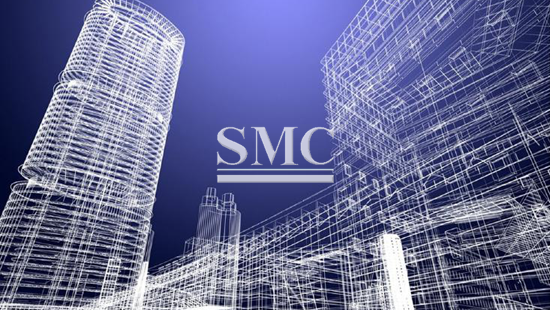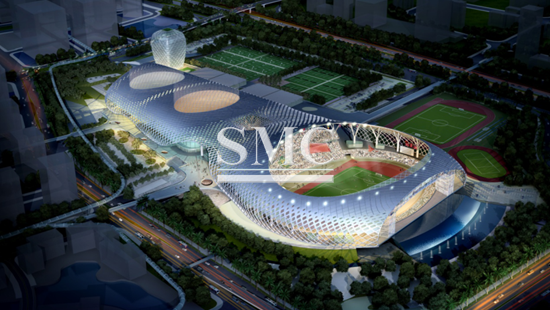
- Présentation de l'entreprise Le noyau de Shanghai Metal Vision & philosophie Partenariat Certificat Culture d'entreprise
- Nos services Conception et ingénierie Maintenance et entretien Fabricant & Fabrication Mise à jour et transformation Stockage et logistique Traitement et commerce
- Gestion d'entrepise Notre histoire Responsabilité globale
- Centre d'achat Stagiarie
- Produit métallique Produits en aluminium Produits en cuivre Produits revêtus métalliques Produits en acier inoxydable Produits en acier carboné Alliages spéciaux
- Construction & Projet Caillebotis en acier Étagère Structure en acier Pont en acier Système d'échafaudage Matériaux de construction Matériel Chimique One-Stop Solutions pour les Projects
- Conteneur Conteneur standard ISO Conteneur d'équipement Conteneur de stockage Maison conteneur Conteneur frigorifique / isolé Conteneur offshore
- Machine Machine à former des métaux Autres machines Machine à découper les métaux Machine de traitement des métaux Machine à cintrer Machine d'aggloméré
- Produits mécaniques Industrie automobile Divers Équipement d'amarrage Equipment marin Récipient à pression
- Système électromécanique Câble Automation Distribution d'énergie Système d'alimentation solaire Système de protection électrique Convertisseur Ligne de production Système d'éclairage
- Matériel médical Produits de nourriture Produits de voies aériennes Produits de soins infirmiers Produits d'injection
- Machines de construction
- projet epc
- Tuyaux de pétrole
- Tuyaux de l'eau
- Tuyau de gaz
- Bateau et accessoires d'amarrage
- Produit métallique pour la décoration
- Composant du transformateur
- Pipe d'échangeur de chaleur
- Pièces et accessoires de climatisation
- Chaudière
- Appareil de cuisine et de salle de bains
- Métal pour appareils ménagers
- Appareil solaire
- Ascenseur
- Toiture et plafond
- Câble
- Tank
- Emballage
- Pièces détachées et accessoires pour machines et équipements
- Moule
- Pièces d'automobile
- Rail et rail de grue
- Équipement de quincaillerie
- abrasif
- Construction de route
- Composants electroniques
- Matériaux de construction et de décoration
- Portes et fenêtres
- Réfrigérateurs
- News release Nouvelles de l'industrie métallurgique Nouvelles de la machinerie et de l'équipement Nouvelles de la construction et du bâtiment Nouvelles des produits mécaniques Nouvelles de conteneurs Nouvelles du système électrique Nouvelles des matériels médicaux
- Médiathèque Vidéo Image Suivez Shanghai Metal sur les médias sociaux
Future Steel Buildings
Comment les bâtiments en acier se comparent aux structures basculantes en béton
Les bâtiments en acier et les structures basculantes en béton sont deux options populaires pour une construction rapide. Bien que les deux méthodes offrent des points forts, chacun d'entre eux se comporte mieux dans des situations différentes. Voici un aperçu de la façon dont ces méthodes de construction se comparent les unes avec les autres.
Taille du bâtiment
L'acier est un excellent matériau pour les petits bâtiments de moins de 50 000 pieds carrés en raison de la main-d'œuvre et de l'équipement nécessaires à la construction de structures en béton inclinables. Cela est vrai malgré le coût global plus bas de l'acier par rapport au béton. Dans les bâtiments de plus de 50 000 pieds carrés, cependant, le coût de la construction est compensé par le prix moins élevé du béton.
Flexibilité dans la conception
L'acier offre un haut niveau de flexibilité dans la conception et la construction de bâtiments sur mesure. Lorsque de plus grandes portées et le nombre de baies sont impliqués, les paquets de construction en acier pré-conçus permettent de plus grandes économies. Cependant, plus d'exigences personnalisées augmenteront considérablement le coût d'un bâtiment en acier. Dans le même temps, des coûts de personnalisation plus importants sont parfois inclus dans les kits pour les structures en béton inclinables. Cela peut signifier une budgétisation plus facile liée aux permis, aux taxes, à la plomberie, à la finition et aux travaux de fondation.
How Steel Buildings Compare To Concrete Tilt-Up Structures
Steel buildings and concrete tilt-up structures are two popular options for fast construction. While both methods offer definite strengths, each performs best in different situations. Here’s a look at how these building methods compare with each other.Building Size
Steel is an excellent material for smaller buildings under 50,000 square feet because of the labor and equipment required for building concrete tilt-up structures. This is true despite the lower overall cost of steel compared to concrete. In buildings over 50,000 square feet, however, the cost of construction is offset by the cheaper price of concrete.
Flexibility in Design
Steel offers a high level of flexibility in the design and construction of custom buildings. When greater spans and numbers of bays are involved, pre-engineered steel building packages allow greater savings. However, more custom requirements will increase the cost of a steel building dramatically. At the same time, greater customization costs are sometimes included in kits for concrete tilt-up structures. This can mean easier budgeting related to permits, taxes, plumbing, finishing and foundation work.

Availability and Usage of Materials
Because steel is normally brought to the construction site from a distant location, this factors into the total cost of a project. By contrast, a concrete tilt-up structure can be made with locally produced concrete and wooden forms and may cost less as a result. However, steel can be used as soon as it arrives on site while concrete must be prepared, making it dependent on weather. Building speed is also faster with steel thanks to the ease with which it can be erected compared to concrete.
Resistance to Damage
Compared to concrete-tilt up structures, steel buildings are more vulnerable to fire but more resistant to earthquakes and wind. As a result, erection of a steel structure requires more attention to local building codes. Designers use a number of materials to reduce the risk of fire damage in steel structures, including fire-resistant panels and sprays, but they can still become distorted by fire very quickly. Concrete tilt-up structures can withstand significant fire without collapsing and endangering occupants.
Different Purposes
A steel building is generally best for a work structure that lacks heavy public traffic while a concrete tilt-up structure is more appropriate for buildings that will face heavy use for years to come. If vehicular or other accidents strike a steel structure, damage is often more expensive to repair than with concrete tilt-up. Storage buildings, aircraft hangars and workshops are dependable long into the future when constructed from steel, but buildings where security is important should use concrete tilt-up for greater safety.
